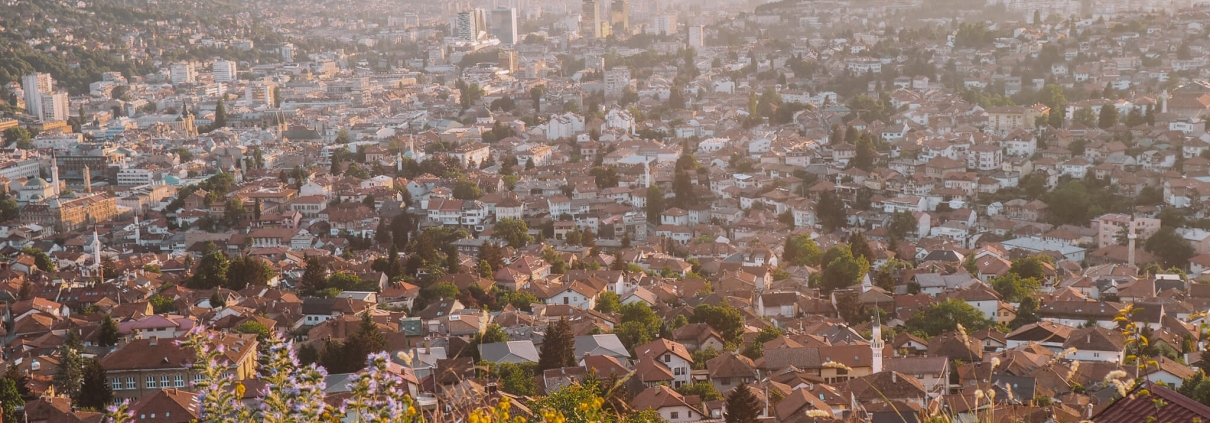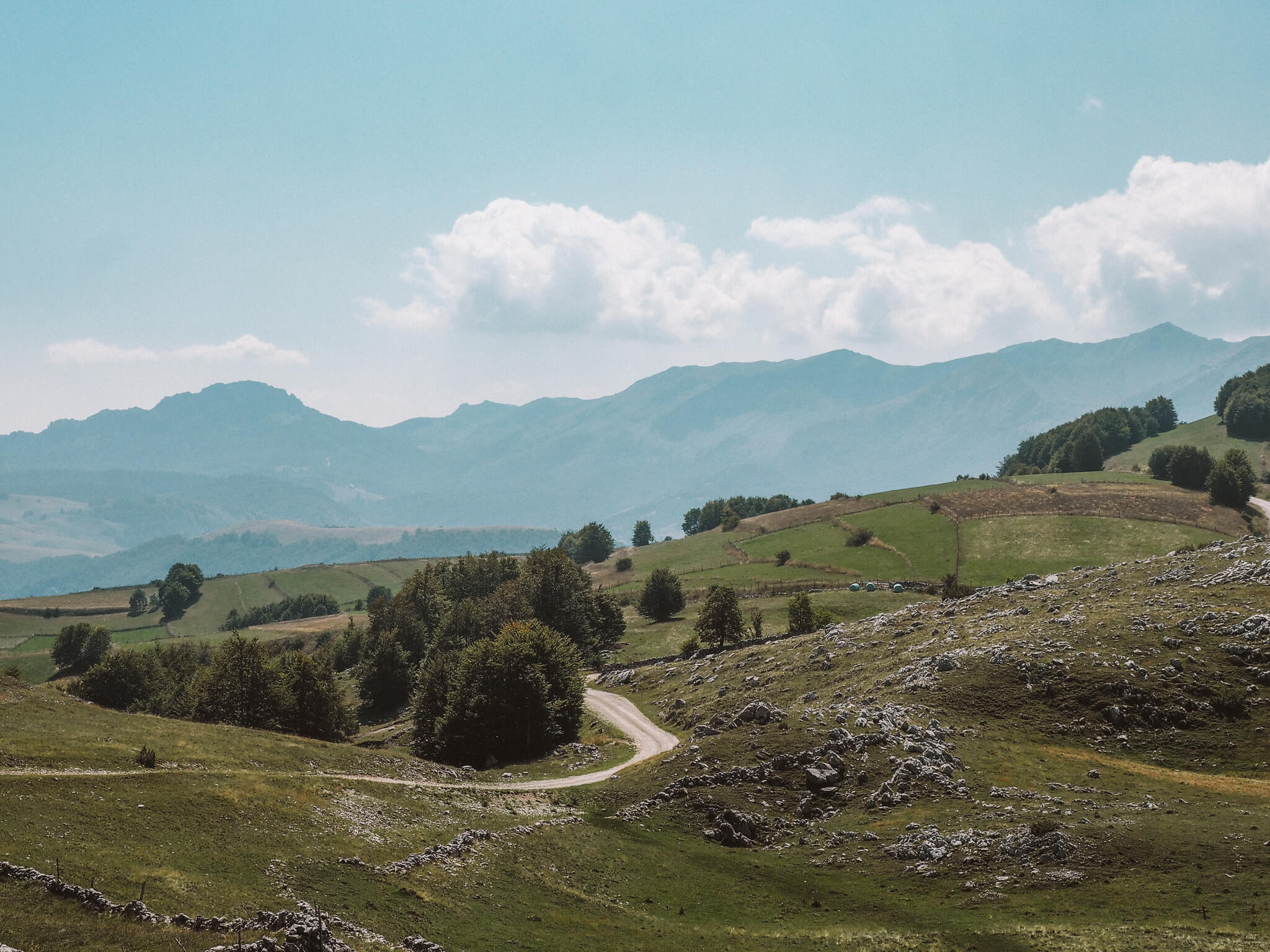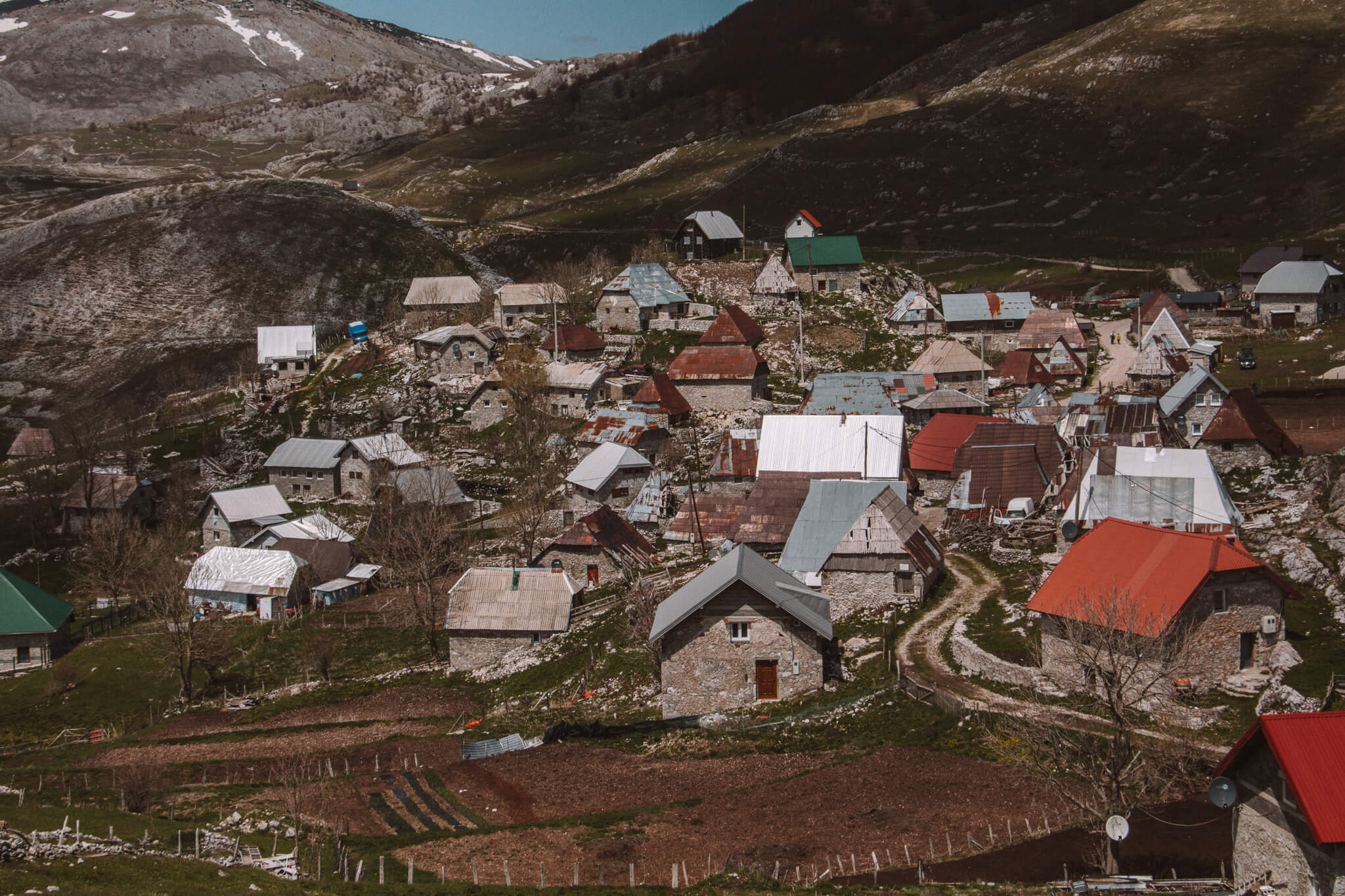All you need to know for your trip to Sarajevo in Bosnia and Herzegovina (2024)
Sarajevo – the perfect destination for culture and nature lovers and foodies alike! This city tah we call home is a fascinating melting pot of cultures – from the Slavs to the Bosnian Kingdom to the Ottomans and Austria-Hungary, this city has seen a lot.
Although we have lived here for years, we love to stroll through the old town, where the history of past centuries is still alive, or drive up to the surrounding mountains, where various outdoor adventures await.
In this article, we’ll tell you everything you need to know for your holiday in Sarajevo. We can already promise one thing: You will be enthralled by a unique blend of history, culture and nature – to really immerse yourself, we recommend exploring the city with an experienced city guide who can unravel the layers of the different eras for you.
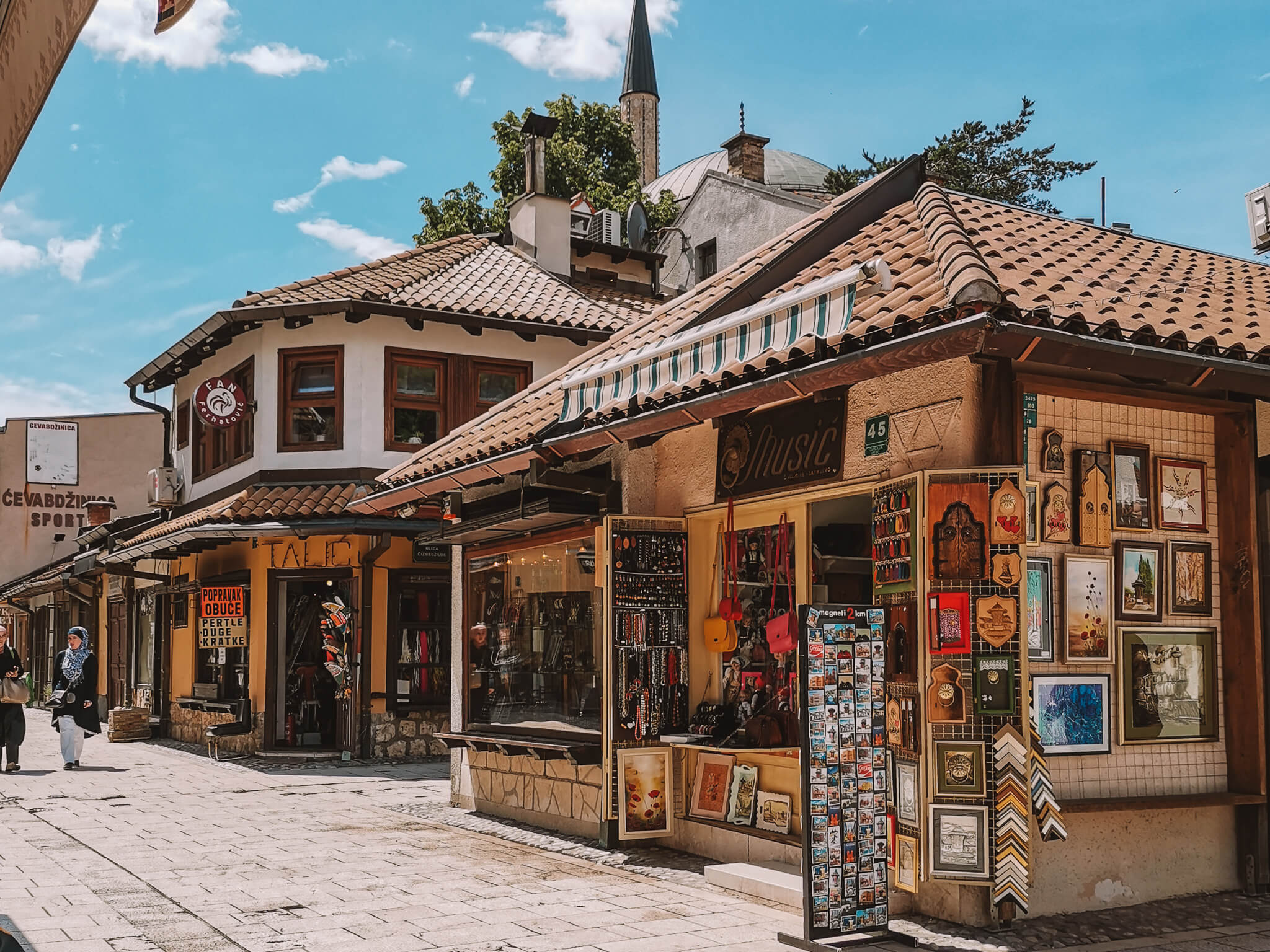
1. What you need to know before you go
Arrival & entry to Bosnia and Herzegovina
For most citizens of Western countries wishing to visit the capital of Bosnia and Herzegovina, the visa requirements are straightforward: No visa is required if travelling for up to 90 days within a 180-day period. A valid passport or identity card that is valid beyond the planned return date is sufficient. For up-to-date information and specific visa requirements for your country, we recommend that you visit the website of your Federal Foreign Office.
What is the weather like in Sarajevo?
Sarajevo has four distinct seasons – each with its own charm.
In spring, the city awakens to mild temperatures and blossoming trees. After a long winter, the inhabitants of the Bosnian capital are eager to get outside – ideal for strolls through the historic alleyways of the Ottoman-influenced old town.
Summer brings hot days and pleasantly cool evenings. Perfect for hiking in the wooded mountains around Sarajevo or cooling off in our numerous lakes. We love summer despite its hot temperatures – because the Sarajevo Film Festival, our favourite major event, takes place every year in August!
Autumn shows Sarajevo from its colourful side, when the leaves change colour and the mild weather continues to make sightseeing tours and hikes possible. The tourist crowds are fewer in autumn, so it’s a great time if you like things a little quieter. Besides summer, it’s our favourite time to visit Sarajevo.
In winter, Sarajevo transforms into a winter wonderland, ideal for skiers and lovers of snowy landscapes – after all, as the venue for the 1984 Winter Olympics, Sarajevo (the only city in the Balkans with this honour) has snowy winters to offer. Just 30 minutes from the city centre, two ski resorts await snow lovers.
What is the best time to visit Sarajevo?
The best time to visit the capital Sarajevo is in spring and autumn, when the weather is at its most pleasant for city tours and hikes. We particularly recommend the months of May to mid-July as well as September and October. From mid-July to September is the peak travel season in Sarajevo – the city gets really crowded and we recommend that you book your accommodation in good time.
If you want to go skiing, the months from January to March are ideal. As you can see, Sarajevo is a great destination all year round – it just depends on what you want to do.
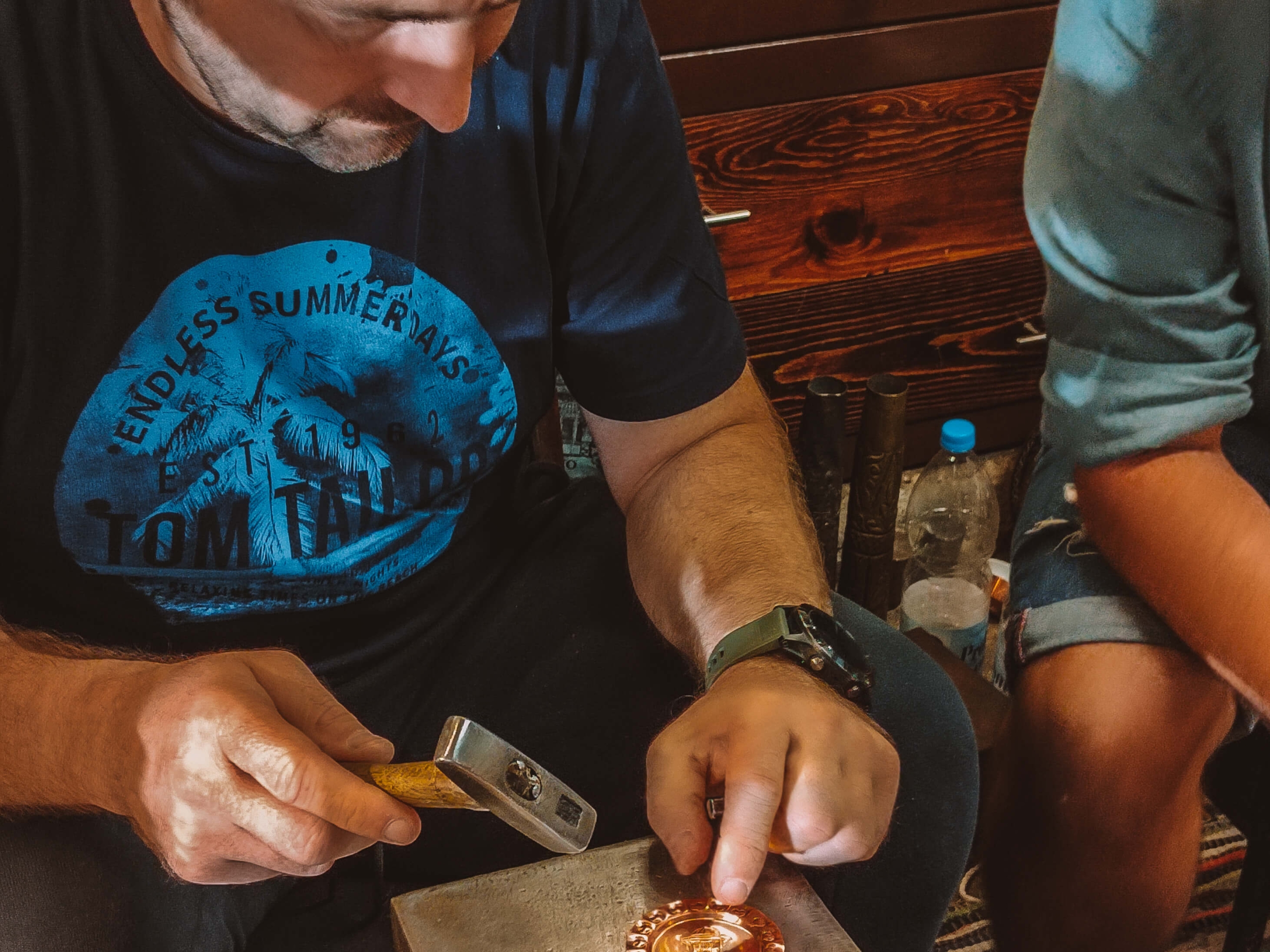
2. Accommodation and transport: tips for Sarajevo
Is public transportation in Sarajevo safe?
Public transport in Sarajevo is safe for tourists. We have buses and trams (the oldest electric tram in Europe, by the way!) that can take you anywhere in the city. The tram runs along the river to the suburb of Ilidza near the airport, and tickets are unbeatably cheap. Buses run up to the neighbourhoods on the surrounding hills and are also cheap and easy to use.
Nevertheless, it is always advisable to keep an eye on your valuables on public transport. As in any city, pickpocketing can also occur in Sarajevo.
Where should I stay in Sarajevo?
The approximately 300,000 inhabitants of Sarajevo have made the most of the valley in which Sarajevo lies: districts stretch up to an altitude of 900 metres up the hills, some with really steep streets. Above the city there are some villas and houses with incredible views!
As a visitor, however, you will certainly prefer to be more in the centre of the action. Here are some recommendations for districts that are well suited to travellers and are centrally located.
- Old Town (Baščaršija): If you want to experience the authentic Ottoman flair of Sarajevo, the Old Town is the perfect place. Here you are surrounded by the hustle and bustle of the shops and Sarajevo’s most important sights.
- Marijin Dvor: If you are looking for accommodation just outside the old town, Marijin Dvor is the right choice. The connection to the city is very good, the old town is even within walking distance, and you have a variety of private accommodation and hotels to choose from.
- Vilsonovo Setaliste (Wilson’s Promenade): If you are looking for a quieter place and want to be close to the locals, then accommodation along the Vilsonovo Setaliste is recommended. This promenade stretches along the Miljacka River and offers a picturesque view of the surrounding mountains. The public transport links are good and you have plenty of restaurants to choose from. This is perhaps our favourite neighbourhood in the city.
 3. Sightseeing and attractions in Sarajevo
3. Sightseeing and attractions in Sarajevo
What are the best places to visit in Sarajevo?
Sarajevo is rich in cultural and historical sights from the Austro-Hungarian era, from its past as part of the Ottoman Empire and from the socialist period of Yugoslavia.
Here are some of the most popular sights that you should explore during your stay in the city:
Baščaršija
The old town of Sarajevo is a historic centre with winding alleyways, traditional markets and historic buildings. Here you will also find the Sebilj Fountain and the Gazi Husrev Beg Mosque, the most important mosque in the country. Another special feature of the old town is that you can find a synagogue, a Catholic cathedral, an Orthodox church and even a mosque within a radius of 200 metres – true multiculturalism that is unique in Europe.
Latin bridge
Everyone knows about the Sarajevo assassination. And the Latin Bridge is the place where the assassin Gavrilo Princip shot the Austrian heir to the throne and Archduke Franz Ferdinand and his wife Sophie in 1914 – an event that is considered to have triggered the First World War.
Vijećnica Town Hall
The National and University Library of Bosnia and Herzegovina is an architectural jewel of the Austro-Hungarian Empire and a symbol of the city’s resilience after it was destroyed by Serbian troops during the Bosnian War and completely burnt down. The museum and exhibition in the former national library, which is now the town hall, is also highly recommended.
The Sarajevo Tunnelling Museum
A fascinating museum that shows the tunnel used during the siege of Sarajevo in the 1990s, which served as a vital link. The city was besieged for 1,425 days and the tunnel was the only way for food to get in and injured people to get out.
Yellow bastion
The old Austro-Hungarian fortress ruins offer the most beautiful sunset view of the city and the surrounding mountains. It is popular with locals and tourists alike and we recommend that all our guests make the steep climb at least once for the sunset.
Sarajevo is generally easy to explore on foot and this list of sights can be supplemented by numerous museums and historical sites. To really get an overview of the city and its complex history, we recommend a guided tour. Our city guides grew up in Sarajevo, know the city like the back of their hand and will give you a deep insight into life in Sarajevo today with anecdotes and stories about local customs.
How many days should I plan for Sarajevo?
The ideal length of stay in Sarajevo depends on your individual interests, planned activities and the desired pace of your trip. However, we recommend that all our guests plan at least 3 to 4 days in Sarajevo to explore the most important sights and soak up the unique atmosphere of the city.
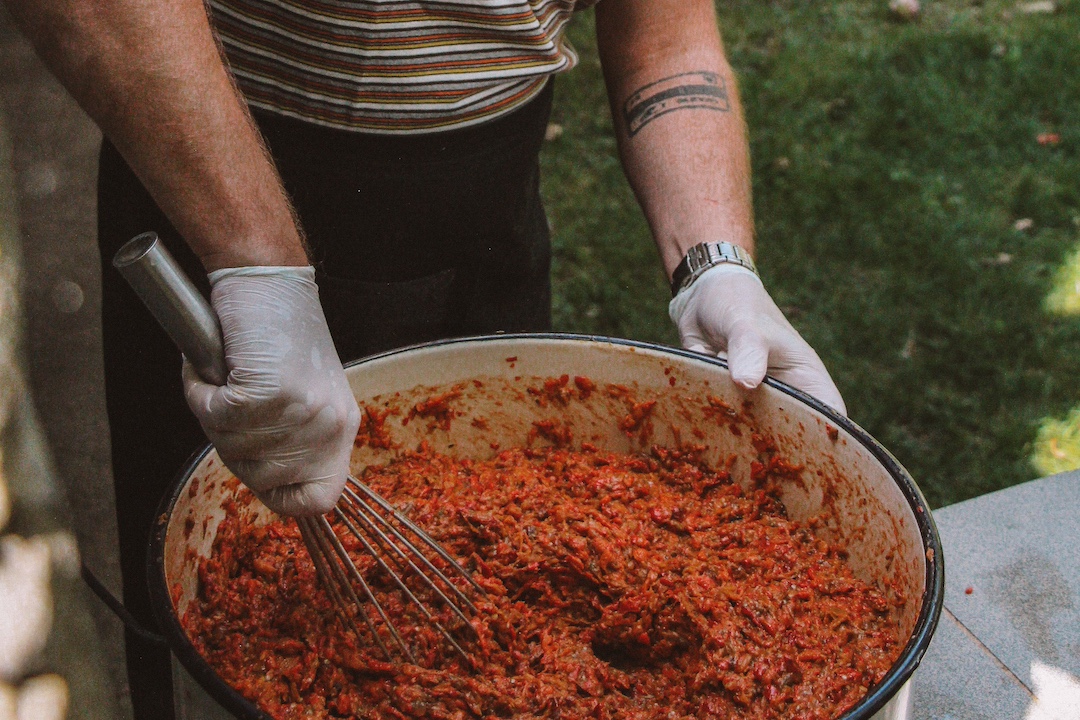
4. Food and culinary delights in Sarajevo
Sarajevo’s cuisine is a fusion of different influences, from the Middle Ages to Ottoman and Austro-Hungarian dishes. You’re probably familiar with the famous Ćevapčići or the pita pastry dish, but Bosnian cuisine is even more diverse than that. We’ll introduce you to a few dishes below – by the way: even vegetarians won’t go hungry here!
Sarajevo also stands for ćejf, savouring the little moment. And there’s nothing Bosnians like more than a cup of coffee. You can drink Bosnian coffee in numerous cafés in the old town centre, eat sweet baklava with it and simply watch the people.
Which Bosnian dishes should I definitely try in Sarajevo?
To really taste the diversity of Bosnian cuisine, we recommend that you order and savour the following Bosnian dishes:
Ćevapčići: These grilled minced meat rolls are a culinary must. Be sure to order with kajmak and onions!
Pita: A puff pastry filled with meat or cheese, often served as a snack or breakfast. The crispy texture and savoury filling are a delight.
Begova čorba: This rich, thick soup is a classic dish known for its delicious combination of flavours – okra, cream and chicken make it a meal worthy of a bey.
Dolma: Stuffed vegetables, mostly peppers are used, but you will also find onions and courgettes in a paprika sauce.
Tufahija: A sweet dessert made from walnuts, sugar and poached apples, often garnished with whipped cream.
Baklava: This sweet puff pastry, filled with nuts and drenched in syrup, is a delicious end to any meal.
These dishes only give a small insight into the diverse world of Bosnian cuisine. With a food tour, you can delve even deeper and eat where the locals also like it.
The best restaurants in Sarajevo for traditional Bosnian cuisine
- Inat Kuća
- Ćevabdžinica Željo
- Buregdžinica Sač
- Kibe Mahala
5. Nature and outdoor activities around Sarajevo
Sarajevo offers a wealth of outdoor activities just a few minutes’ drive outside the city centre – from our Olympic mountains to wild rivers and secluded mountain lakes. Here are some of our favourite activities for nature and adventure lovers:
Hiking along the bobsleigh track on Trebević: The abandoned bobsleigh track from the 1984 Winter Olympics is a great lost place. It is slowly being reclaimed by nature and used by graffiti artists for their artwork
Hiking to the loneliest village in Bosnia and Herzegovina: Lukomir, a village nestled on the edge of the second deepest canyon in Europe, lies at an altitude of almost 1,500 metres. It is only inhabited in summer, when you can explore it on a circular hike of around 16 kilometres.
Skiing: In winter, the region turns into a paradise for skiers. The Jahorina and Bjelašnica mountains are popular ski resorts for skiers in the region.
Rafting on the Neretva: The Neretva River, around 2 hours from Sarajevo, offers exciting rafting opportunities through spectacular gorges and is also suitable for families.
Vrelo Bosne: The Vrelo Bosne Nature Park is an ideal place for walks and picnics and boat trips along the picturesque springs and meandering little rivers that have given the country its name.
Mountain biking: The mountains around Sarajevo offer challenging mountain bike trails with different levels of difficulty. If you prefer a more leisurely ride, you can also explore the mountains on an e-bike.
Whether summer or winter, Sarajevo offers a variety of outdoor activities for anyone who wants to enjoy nature and fresh air.
6. Practical tips for your trip to Sarajevo
What language is spoken in Sarajevo?
Bosnian is spoken in Sarajevo and is one of the official languages of Bosnia and Herzegovina along with Croatian and Serbian. Here are some basic phrases in Bosnian that are useful for visitors:
- Hello: Zdravo
- Please: Molim
- Thank you: Hvala
- Excuse / Pardon: Izvinite
- Yes: Since
- No: No
- Hello: Dobar dan
- Goodbye: Doviđenja
Most of the locals in Sarajevo also speak English, especially in the tourism sector. Nevertheless, we always recommend that our guests know a few basic Bosnian phrases in order to respect the local culture and facilitate communication. Bosnians are very happy about every Bosnian word a tourist can speak.
Is Sarajevo a safe destination?
Yes, we always emphasise that Sarajevo is an absolutely safe destination – for solo travellers as well as for families with children. Our founder grew up in Sarajevo and can vouch for the fact that visitors can enjoy a carefree stay in this lively, hospitable city. Nevertheless, it is important to observe the usual safety precautions that apply in most cities worldwide: Keep your valuables safe, especially in the touristy old town, and obey local traffic rules. In Bosnia and Herzegovina, cars still have the law of the jungle, so look left and right when crossing the road.
But apart from petty crime such as pickpocketing and speeding drivers, you have nothing to fear when visiting the city: Sarajevo is an absolutely safe destination.
What currency is used in Sarajevo?
The official currency in Bosnia and Herzegovina is the Bosnian-Herzegovinian Convertible Mark (BAM). We recommend that you do not pay in euros, but use the local currency. You can either exchange euros you have brought with you in exchange offices in the city or you can simply withdraw with your credit card – but note that fees are charged, sometimes up to 10 euros.
Larger shops, hotels and restaurants accept credit cards, but it is advisable to carry cash, especially for purchases in smaller shops.
How much does a holiday in Sarajevo cost?
The cost of a holiday in Sarajevo can vary greatly depending on personal preferences, travel period and chosen comfort level. When we plan a trip for our guests, we always ask about their budget to ensure that the holiday stays within the chosen budget.
Do people tip in Sarajevo?
Tipping is not compulsory in Sarajevo, many locals just round up a small amount. However, it is very much appreciated if a tip is given for larger amounts. You should be aware that wages in the catering trade are low and that waiters are therefore very happy to receive this courtesy. For good service, we recommend tipping 10 to 15 % of the bill.
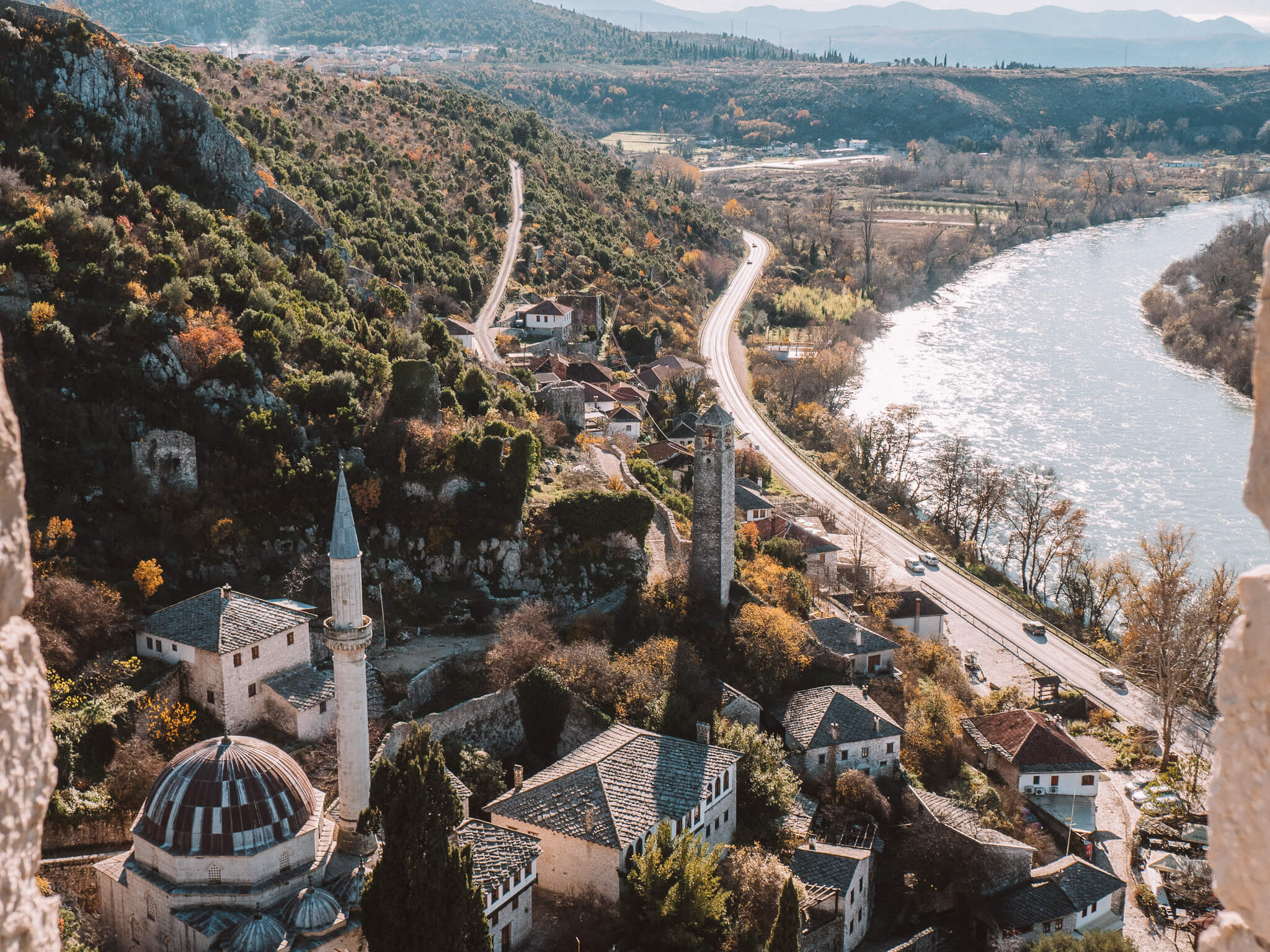
7. How can I travel from Sarajevo to other cities in Bosnia and Herzegovina?
If you want to be flexible and have the freedom to explore the area on your own, a hire car is the best option. The connections between all major cities are usually good and you can discover many interesting places along the way. We will be happy to suggest an itinerary for you.
Buses are also a frequently used option for travelling between cities. There are regular bus services connecting Sarajevo with many cities in Bosnia and Herzegovina. However, buses are not always reliable and tickets cannot be purchased online, but rather on the spot.
The railway network in Bosnia and Herzegovina is not as extensive as in some other European countries, but the train journey from Sarajevo to Mostar is considered one of the most beautiful in Europe and is definitely recommended!
Your holiday in Sarajevo
Sarajevo, the fascinating capital of Bosnia and Herzegovina, combines history, culture and natural beauty in a unique way. From the old town centre to the surrounding mountains, the city offers a multifaceted travel experience.
To get the most out of your stay, we recommend that you don’t just trot along the well-trodden tourist paths through the city, but delve deeper: talk to locals, learn how to drink Bosnian coffee, taste local dishes: the best way to do this is with a guided tour. This will make your trip a truly unforgettable experience!

